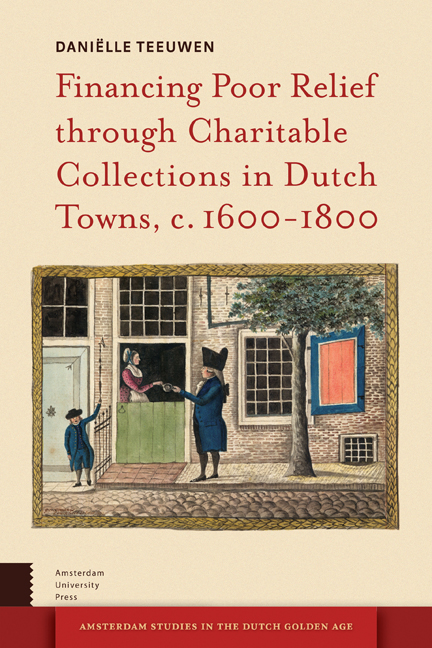6 - Donating to Collections
Published online by Cambridge University Press: 10 December 2020
Summary
During a collection organized by the Delft town council in April 1683 for persecuted Protestants who had fled their home countries and had sought refuge in Delft, the approximately 24,000 town inhabitants donated a sum of 4,440 guilders. On this occasion, members of the municipality themselves, accompanied by district wardens, went door-to-door carrying open collection plates, which resulted in a large sum. During the Christmas collection for the Chamber of Charity in that same year, in which case open plates were also used to stimulate generous giving, about 6,750 guilders were collected on one single day. The collections held during services in Delft's Oude Kerk and Nieuwe Kerk were usually also profitable, and in 1683 totalled over 15,000 guilders, which was more than 300 guilders per week. In contrast, the collectors who weekly went round door-to-door with the ‘kopere bos’, a copper collection box, on average only managed to collect about 17 guilders per day. Poor boxes located in inns yielded slightly over 800 guilders in this year.
As outlined in chapter 4, urban and church authorities were well aware that the outcome of a charitable appeal depended on many factors, such as the purpose collected for and the way in which charitable appeals were organized. By creating the right circumstances for giving, as well as by putting pressure on the population to contribute to charitable causes they tried to generate high levels of generosity. This chapter studies the effectiveness of the authorities’ policies in influencing charitable giving. On the one hand it demonstrates that large parts of urban society contributed to charitable collections, and that the organizational and rhetorical tactics applied by town councils and church boards overall proved to be successful. On the other hand, it also becomes clear that the authorities still depended on the population's willingness to donate, and that it was difficult to encourage people to give if they lacked a sense of social connectedness or did not believe that the donations would be used wisely.
The donors
In historical sources, donors to charitable collections often remain invisible. Other than in the case of larger-sized gifts such as charitable bequests or the founding of almshouses, when the benefactors’ names, and sometimes even age, family situation and profession are known, donations to collections are usually lumped together without distinguishing between different types of givers or donors on an individual level.
- Type
- Chapter
- Information
- Publisher: Amsterdam University PressPrint publication year: 2015



